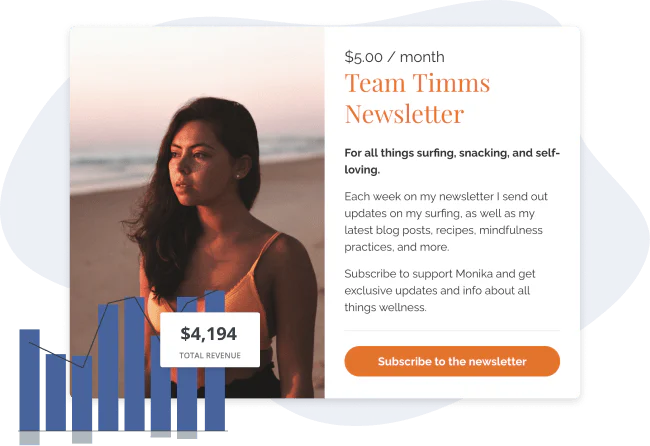In this Article
Ever bought an item just because it was on sale?
You’re not alone.
Irresistible discounts are hard to pass up.
But discounts aren’t just a good deal for shoppers. With the right discount strategy, you can use discounts to your advantage as a creator.
Here’s how to use discounts to grow and scale your business (and delight your customers along the way).
The psychology of discounting: Why discounts work
Discounts are a brilliant strategy as long as you don’t overuse them.
Overuse can condition shoppers to expect reduced prices, which lowers the appeal of your full-priced offers.
However, offering the occasional discount can help you attract new customers and retain current ones.
Here’s why.
The reassurance of a discount helps attract new customers and increase sales
Humans have a strong inherent desire to avoid pain and potential loss. And trying new products can be risky—especially if that product costs big bucks (like a premium course or a coaching package with several sessions).
Discounts lower that risk and reassure potential customers that they won’t incur a large loss if they buy your offer.
Exclusive discounts help retain existing customers
According to the flywheel marketing model of running a business, you need to continually engage with—and delight—current customers to sustain business growth.
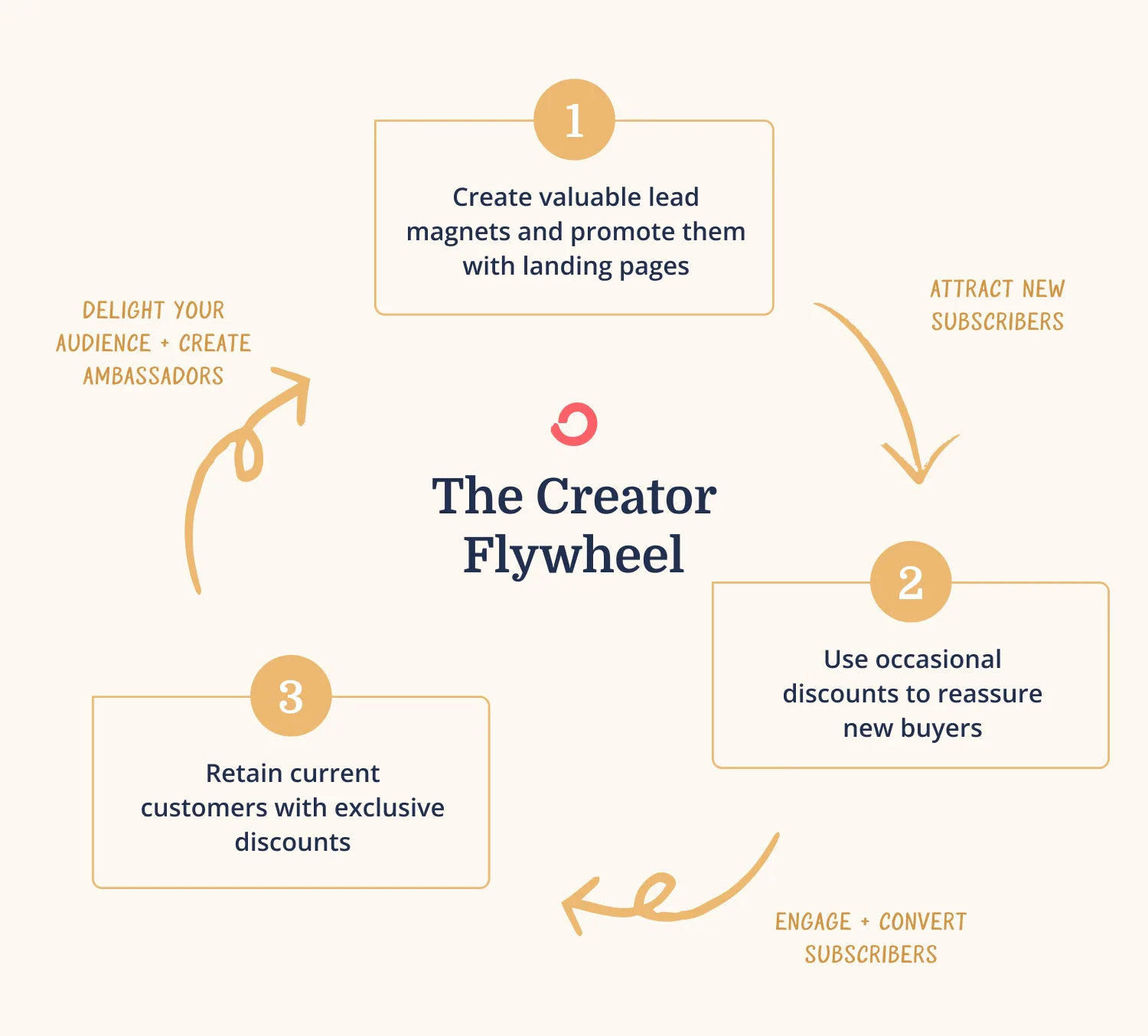
And one way to do that is by offering loyalty rewards like exclusive discounts.
For example, instead of offering a 20% discount to everyone on your email list, host an exclusive sale for your top subscribers. (You can locate your top subscribers in Kit using Subscriber Scoring.)
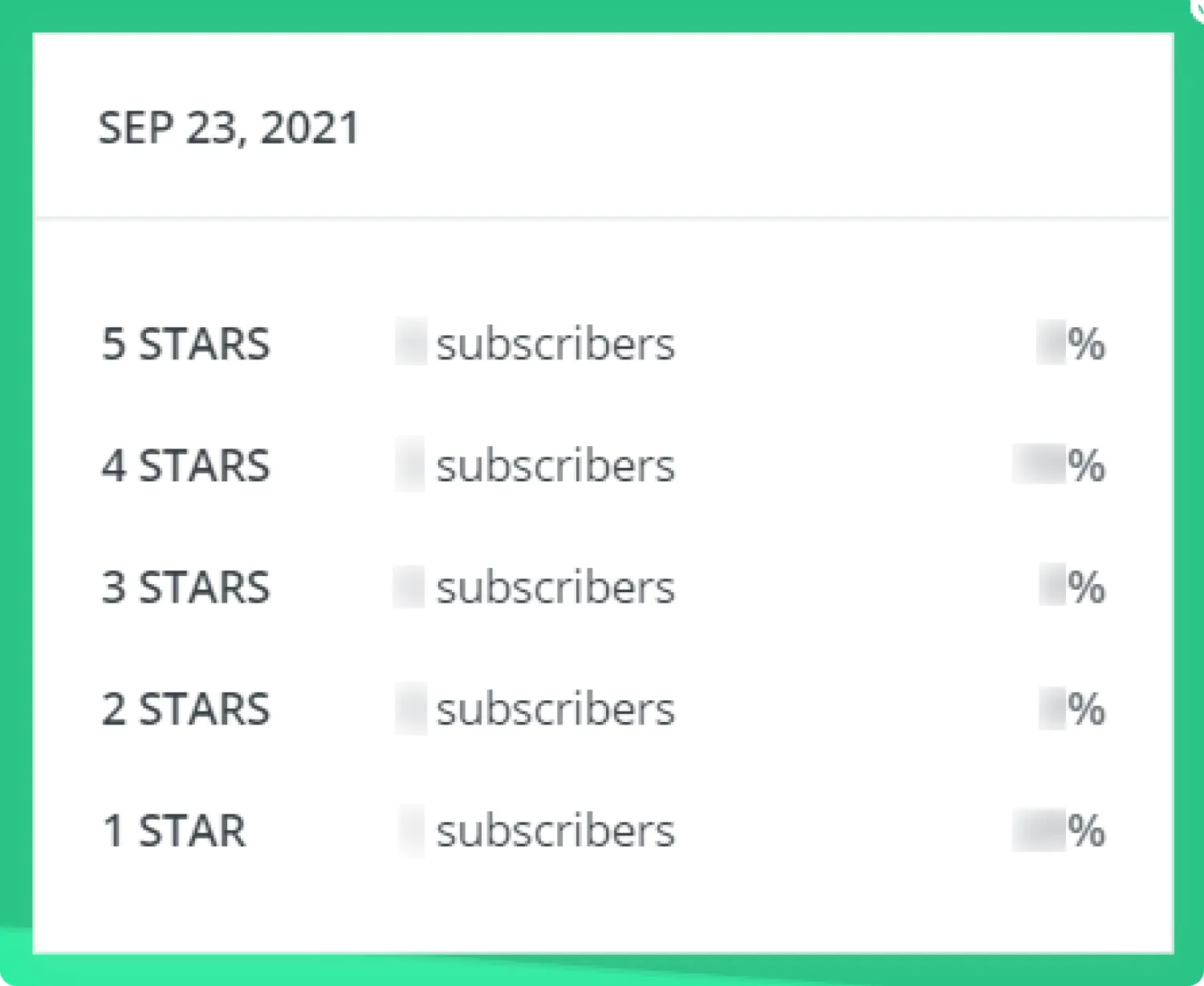
Subscriber scoring lets you find your top subscribers (listed as 4- and 5-star subscribers).
Research by Yotpo found that 53.2% of consumers will stay loyal to a brand with some type of loyalty program. So, these special savings will increase customer satisfaction and keep customers around for the long haul.
11 clever discount strategies, tips, and examples to reach your goal
The best discount strategy depends on your goal. Typically, there are three main goals each business has when considering discounts:
- Attract new clients
- Boost sales numbers
- Increase customer loyalty
We’ll go over each goal, including different discount examples to help you achieve each goal we’ve listed.
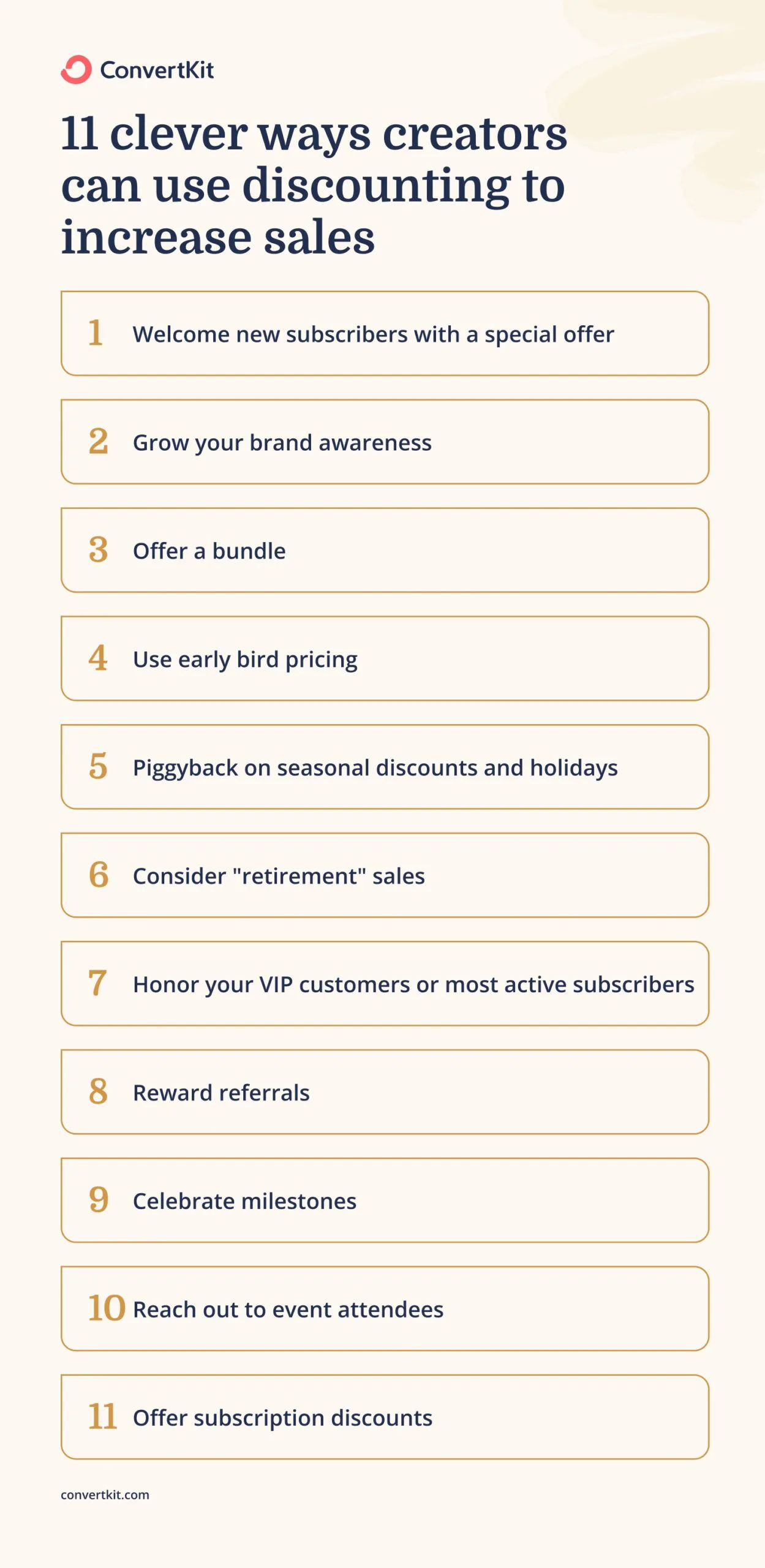
Discount strategies to attract new clients
Discounts to attract new clients are ideal if you:
- Recently started your business
- Want to scale your business
- Want to improve the “attract” section of your flywheel
1. Welcome new subscribers with a special offer
Welcoming new subscribers with a special offer lets you grow your list and sell more products simultaneously.
And according to RetailMeNot, 44% of consumers are looking for coupons more than they did in the past. By offering coupons, you can appeal to this growing cohort of savvy shoppers.
Artist Melissa offers a 15% off code to those who sign up for her email list.
She uses a landing page to advertise her coupon and collect email addresses. After signing up, she uses Kit to automatically send an email with her coupon code so new subscribers can shop her artwork.
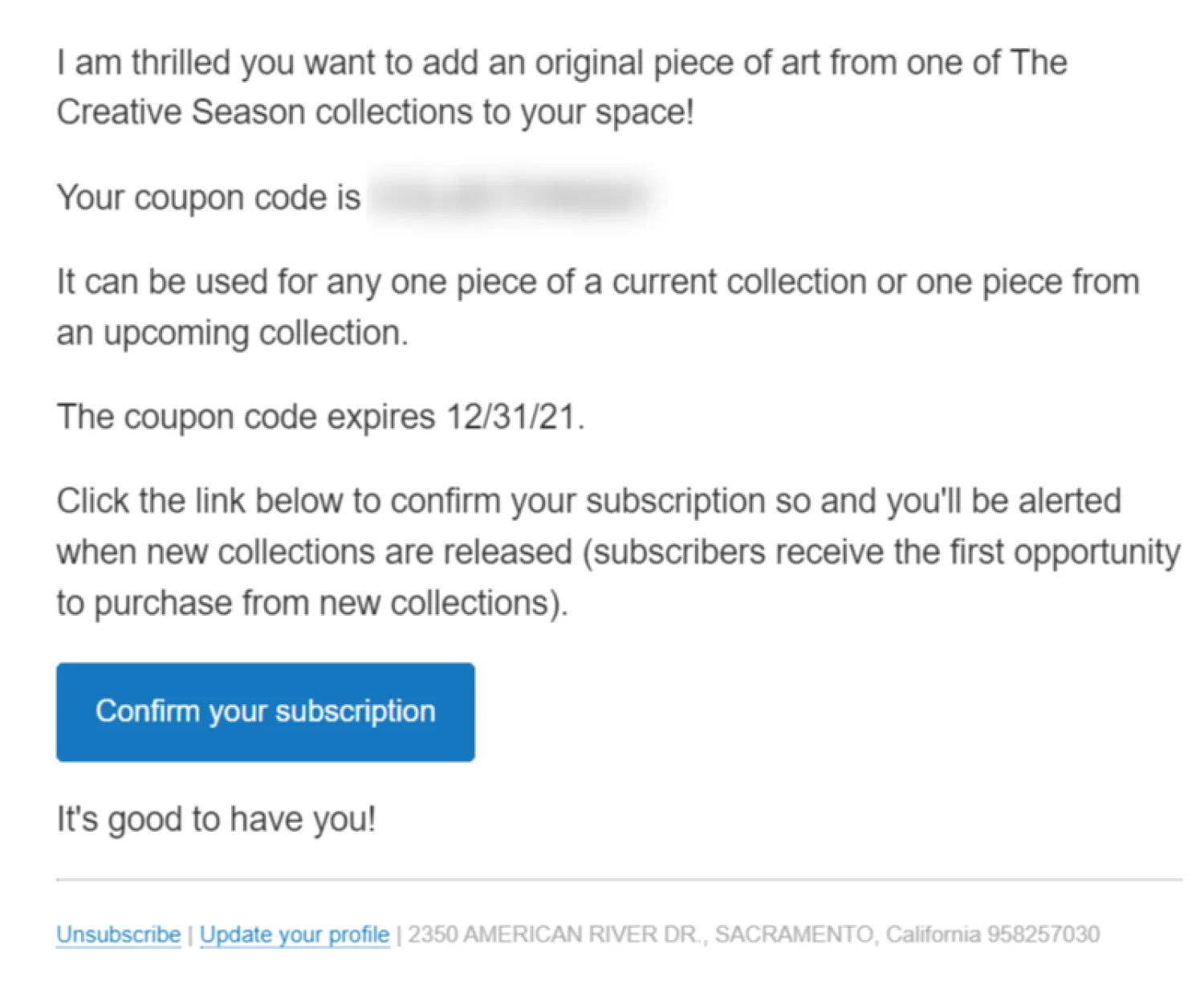
If you take this approach, don’t forget to set up a sequence to welcome new subscribers after emailing them your special offer.
Your welcome sequence warms up new subscribers so they’re more likely to use their discount and (hopefully) buy more of your products down the road.
2. Grow your brand awareness
Discounting also makes for a great promotional tool. Whether you’re a new brand looking to grow your audience or an established creator ready to grow your customer base, strategic discounts can help get the word out about your products or services.
For example, designer Adham Dannaway announces a discount for his new product on X. He asks followers to repost his post to increase awareness of his newly launched book.
Just remember: Use discounts to attract new customers sparingly. Leaning too heavily on deals to grow your audience can hurt your brand.
And customers might expect a discount before they buy, which prevents them from buying other products of yours at regular price.
Discount strategies to boost sales numbers
Discounts to boost sales are a good idea if you:
- Just launched a new product
- Want to even out peaks and valleys in your business
- Plan to retire a product
- Want to improve the “engage” section of your flywheel
3. Offer a bundle
Bundling products is a great way to boost your revenue quickly.
Product bundling is when you offer customers a discount for buying two or more of your products simultaneously. Bundling is effective because your customers get more value for their money and you earn more per sale.
Let’s say you’re a craft blogger who sells patterns, like Creatively Crafting does. Instead of selling single patterns, bundle up several. This way, you can increase your average order value (AOV) while also giving a discount to your customers.
For bundles to be effective, the products should be related. Otherwise, your customer might not see the value in each product within the bundle.
For example, a photographer might offer a bundle of animal stock photos. Or a musician might bundle beats and jingles of the same genre.
4. Use early bird pricing
Early bird pricing can drum up excitement for a new product and reward those who buy it first.
Elixir Radar offers their book at a discounted price for their beta program. Customers who buy the book receive chapters one through four.
They then receive the other chapters after Elixir Radar has written them.
This way, Elixir Radar has funds to finish the book, and their audience can enjoy a helpful resource at a steep discount.
To use early bird pricing, create a coming soon landing page that details your latest product. Tell subscribers how much they’ll save by signing up early and when the discount ends.
5. Piggyback on seasonal discounts and holidays
Big brands like Amazon create massive interest around holiday sales events like Black Friday and Cyber Monday.
If you’re selling digital products, seasonal discounts are the perfect opportunity to boost your sales. Consumers are already looking for great deals, making holidays the ideal time to offer discounts on your products and attract new customers.
Consultant Charles Floate advertises his Black Friday deals on X/Twitter.
He links to a landing page where prospects can see each product (and their savings). His website includes a bright red banner at the top of each page so people who are reading his blog or perusing through his site don’t miss his deals.
But you don’t need to lean on big holidays like Black Friday to run a discount. Niche holidays are also great opportunities to run a sale.
Coach Nicky Christmas offers a discount on her summit in celebration of National Admin Day.

Nikki Christmas is a great discount pricing example of a niche holiday. She celebrates National Admin Day by offering her audience a discount.
Search for holidays relevant to your business (like National Pancake Day—perfect for food bloggers!) and see how to tie different holidays back to strategic discounts.
6. Consider “retirement” sales
Retirement sales are a discount tactic for when you need to close the doors to one (or more) of your offers. Instead of quietly retiring your product, offer a discount so people who were on the fence get one last chance to buy it.
Creator Leonie Dawson offered 50% off two courses they were retiring. Each course was discounted for only three days, and they advertised the courses on a dedicated landing page.
Like Leonie, consider offering a steep discount for retired courses. Especially if the information in the course might not be relevant for much longer.
Discount strategies to increase customer loyalty
Discounts to increase customer loyalty can work if you:
- Are pivoting into a different niche and want to retain customers from your previous niche
- Want to improve the “delight” section of your flywheel
7. Honor your VIP customers or most active subscribers
We’ve already learned that customers will stay loyal to a business that offers some type of loyalty program, like exclusive discounts.
One way to reward customers is by giving them a discount directly after their purchase. Do this by adding a discount within their receipt or in your welcome email sequence.
Mountain Warehouse sends a 10% coupon to customers if they fill out a survey. Customers can snag a deal and Mountain Warehouse gets feedback to improve their business. It’s a win win for both parties.
Or consider sharing a special discount with subscribers or followers, like muralist Eric Friedensohn did when he launched his ecommerce store:
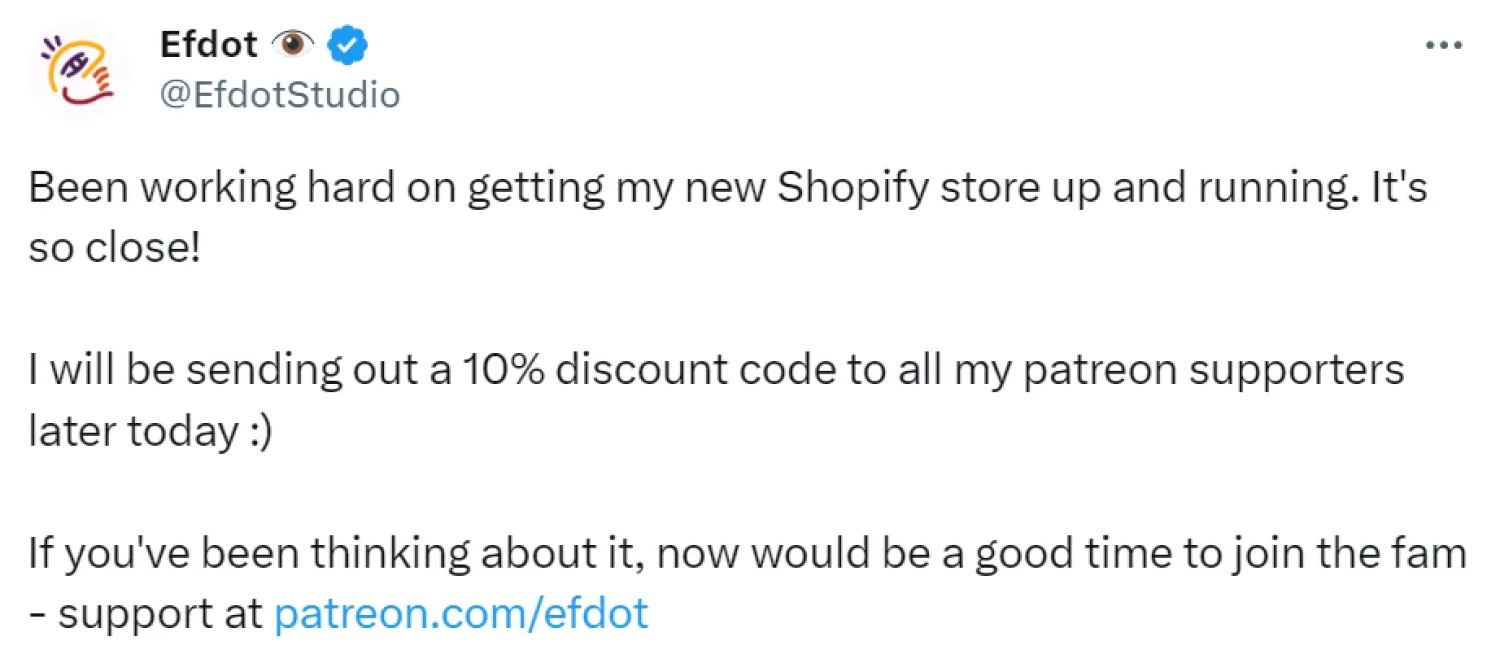
Image via Efdot
Eric does two things: He rewards his loyal Patreon subscribers and encourages people to sign up to his Patreon to claim their discount.
And The Poet’s Circle encourages people to sign up for their community membership by detailing the exclusive discounts that members receive.
Segment your email list to find groups of people that have the highest lifetime value or engage the most with your emails. These people are your biggest supporters and deserve some extra savings.
Then, create tailored offers as a way to thank your biggest fans.
8. Reward referrals
Referral programs help you grow your email list and build brand loyalty in one go.
With a referral program, you can offer gifts and discounts to people who refer others to your list. Usually, the more people someone refers, the bigger reward they receive.
Email marketing expert Brennan Dunn offers a tiered rewards system for those who refer people to his newsletter. Subscribers can unlock rewards like discounts to freebies by sharing his newsletter with their network.
Brennan uses Kit and SparkLoop to power his newsletter referral program and says his list grew 9.9% with this simple setup.
Pairing Kit and SparkLook lets you add information about your referral program to each email you send. It’s a hands-off strategy that can grow your list and income.
9. Celebrate milestones
Important milestones—both for your customers and your business—are great opportunities to celebrate with a revenue-generating discount.
You can say thanks to loyal subscribers by offering discounts on milestones related to your brand, such as your business anniversary or reaching a certain number of subscribers.
Suzi and John Whitford offer a flash discount to celebrate one of their birthdays.
And marketer Ross Simmonds celebrates 22,000 followers with a discount for one of his resources.
Here are some other celebration-worthy milestones:
- Selling a certain number of items
- Hitting a certain number of pageviews on your blog
- Helping a certain number of clients
- Your newsletter’s birthday
10. Reach out to event attendees
Post-event emails should be part of your event marketing plan. And you can use those emails to offer discounts to attendees.
Giving past event attendees a discount is a great way to thank them and encourage them to buy your products.
This fitness studio gave event attendees a limited-time discount to their classes.
You can also use a post-event thank-you email to offer an early bird discount for next year’s event. Marketer Ross Kernez says he offers an early bird discount for his event SEO Meetup:
He also offers attendees an additional discount for each friend they refer, which helps him fill even more seats for his event.
11. Offer subscription discounts
Recurring subscriptions are a source of dependable income. And you can turn virtually any digital product into a subscription. Like a paid newsletter, monthly access to a course or resource library, or client retainer packages.
Photographer Alicia at Pixistock discounts her annual membership. She highlights the annual subscription by noting that it’s the best deal of the three (and she gives buyers an additional bonus for opting for the 12-month membership).
Here are a few ways to structure your subscription discounts:
- Offer a percentage off someone’s first month
- Offer a discount for those who buy an annual subscription
- Offer a set amount of months for a set price (for example, six months for the price of five)
- Reward current members by giving them a discount to renew their subscription when it expires
How to set up your discount strategy with Kit
Kit Commerce gives you all the tools you need to set up discounts and sell your products and services.
To get started, head to Earn > Products.
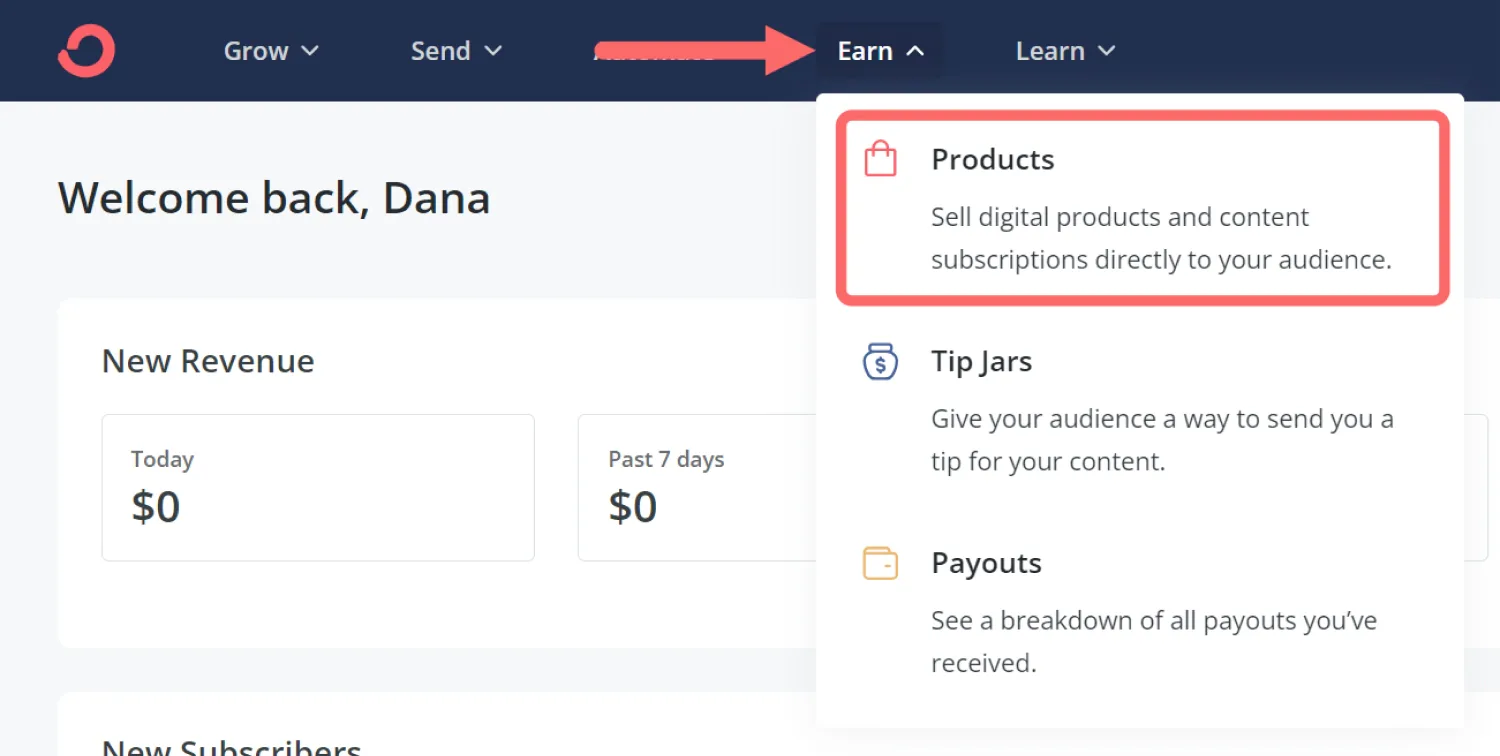
Discount code
To add a discount code click into the product you want to discount. Then go to Settings > Discounts and add your discount code by clicking Discounts > + Add a discount code.
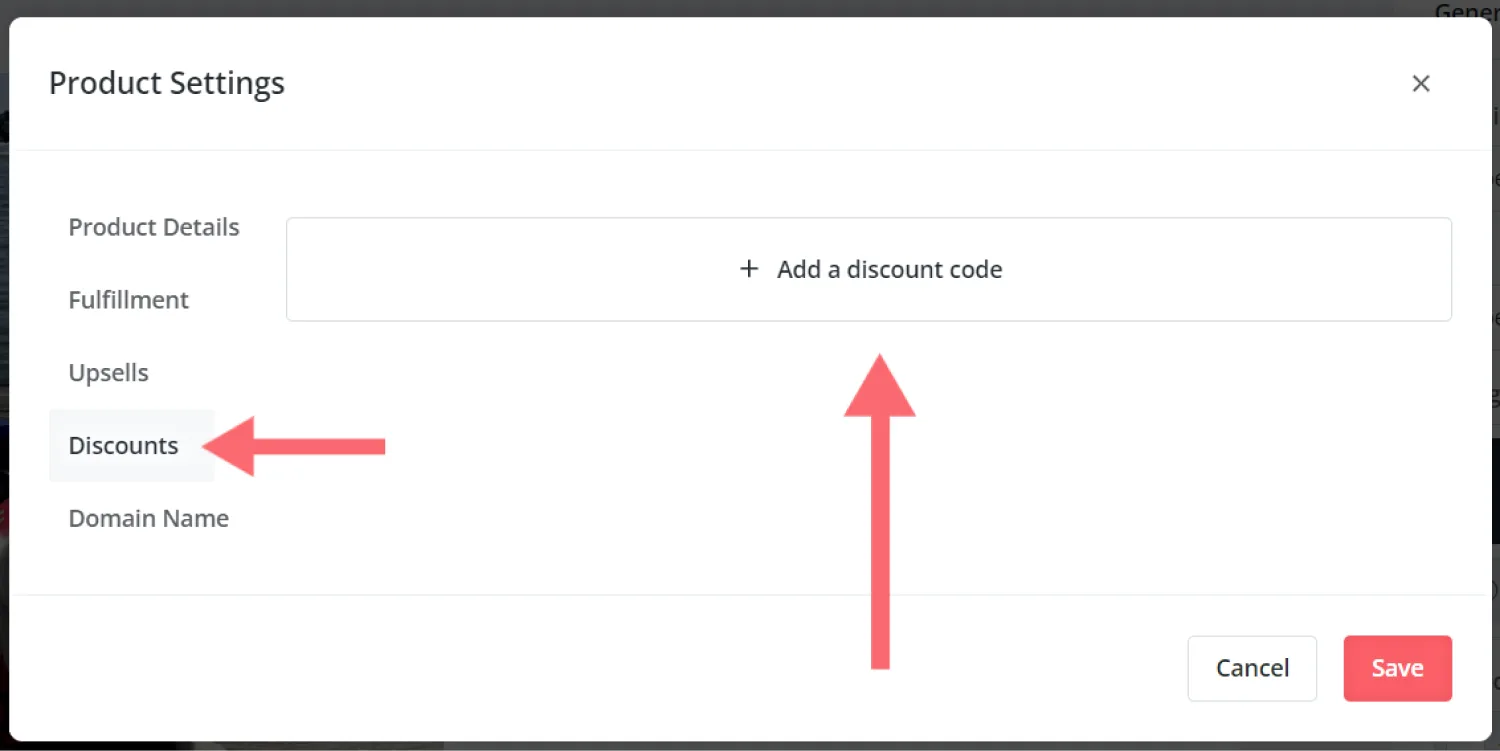
Adding a discount code to a product gives you a unique URL to a landing page where shoppers can view the sale. Like this:
You can share this unique URL with your audience while your sale is running.
Percentage-based vs fixed sum discount
You can choose to run a percentage-based discount (i.e., 20% off) or a fixed sum discount (i.e., $10 off) by selecting “$” in the dropdown.

Percentage-based discounts are appealing to buyers—the more they spend, the more savings they accumulate.
But fixed sum discounts can also be appealing and don’t require customers to whip out their calculators to figure out how much they’ll save.
So, how do you know which discount pricing strategy to offer? Follow the Rule of 100:
- If your product costs less than $100, offer a percentage discount.
- If your product costs more than $100, offer a dollar discount.
The Rule of 100 makes your deal appear attractive no matter how big—or small—the savings are.
For example, which deal sounds more appealing:
- A $2.50 discount on a $10 ebook
- A 25% discount on a $10 ebook
Both savings are equal. But the second one feels more exciting from a buyer’s perspective.
Limit the amount of times the discount can be used
Adding limits to your discount is useful when the code is only available to a select number of people. Think: “this deal is only available to the first 10 buyers!” or something similar.
You can add a limit right within Kit:

Period-based discounts (for subscription only)
If you sell a subscription-based product or service (like a paid newsletter) period-based discounts are worth trying. This refers to discounting your product or service for a specific duration.

For example, you can offer the first 50 newsletter subscribers two free months to your subscription as a way to thank them for signing up.
Grow your business with strategic discounts
A solid discount price strategy helps you attract, engage, and delight your audience so your business can thrive and grow.
Even better, your customers will also appreciate the savings and be more likely to turn into loyal, longtime fans of your brand.
Sign up with Kit for free, today and implement your next discount strategy.


















